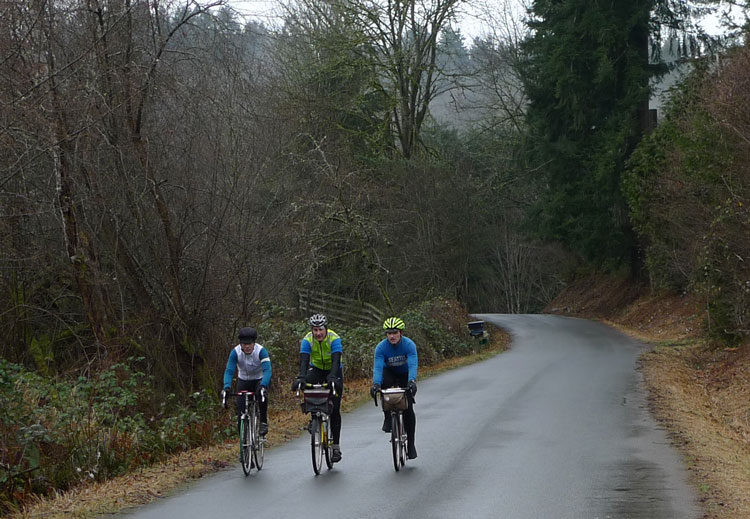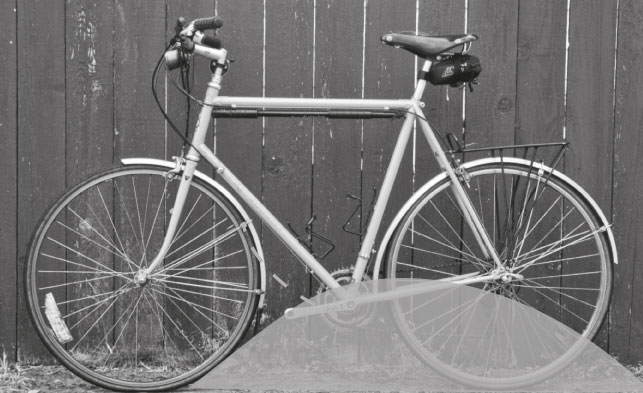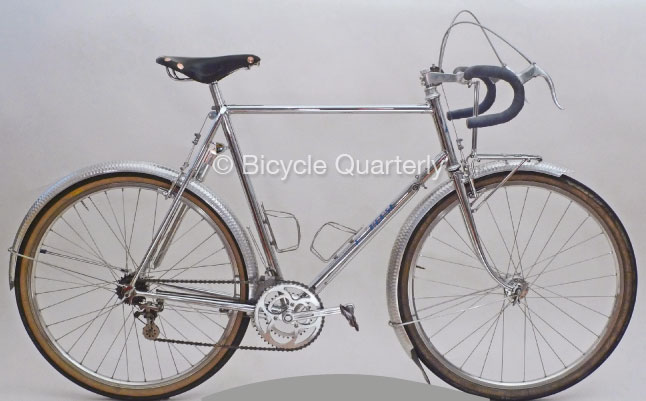Why We Don’t Need Rain Bikes Any Longer
I moved from Texas to Seattle 20 years ago and continued to ride and train year-round. At first, I refused to use fenders. I did not want to spoil the beautiful lines of my racing bike. After one miserably wet winter, I gave in. Like most of my teammates, I got a rain bike.
For those from drier climates, a rain bike is a racing bike equipped with fenders. It usually is a less-valuable bike intended to take the wear and tear of riding in the rain, while your “good” bike remains pristine and ready for rides and events in better weather.
My rain bike was built with an old Celo Europa Columbus SL frame and parts sourced at various swap meets. The only brand-new parts were German SKS fenders (back then made by Esge), the best available in Seattle at the time.
As I wrote above, the “rain bike is intended to take the wear and tear of riding in the rain.” And wear and tear it took indeed, my poor rain bike. The drivetrain always felt gritty from the spray of the front wheel that went straight onto the chain. Lubricating the chain was a ritual after every long ride in the rain, because it squeaked terribly and turned a rusty orange as soon as it dried out. After each ride in the rain, my bike was covered in filth, and so was I. I overhauled my bottom bracket at least twice a year to remove the grit that had found its way into the bearings. I was glad to spare my “good” bike this ordeal. It always was a relief when the forecast had no rain, and I could take out my good bike, with its smooth drivetrain that seemed to run like clockwork.
Today, I don’t have a rain bike any longer. Neither do the people with whom I ride. We ride our “good” bikes all year round. It’s not that it rains less in Seattle than it did in previous decades. Nor have we resigned ourselves to riding ugly bikes with gritty drivetrains. It’s just that our good bikes now have aluminum fenders that don’t spoil the lines of the bike, and more importantly, keep the grit and spray off our bikes. We no longer oil our chains after a rainy ride, nor do we overhaul bottom brackets every year. How are our fenders today different from the SKS plastic fenders?
My rain bike never got photographed, so this bike will serve as a stand-in. The “spray zone” of the front wheel is shown, as well as the drip from the fender stays. Here are the characteristics of plastic fenders:
- Front fender covers just 90°: Spray from the front wheel goes directly onto feet and drivetrain.
- Fenders attach to stays with brackets that form dams on the inside of the fender: Water gets diverted and drips off the stays – onto your feet and chain.
- Fenders are flexible: They resonate annoyingly on rough roads.
- Fenders have to be pulled into shape for mounting: Inbuilt stresses cause them to break after 2-3 seasons.
- Bike frame not designed for fenders means: Clearances are tight. Fenders tend to rub on tires. Fenderlines aren’t perfect, so the bike’s appearance is compromised.
The spray zone of my current bikes’ front wheel is much reduced, and no longer reaches the pedals or the chain. Here are the characteristics of our aluminum fenders:
- Front fender and mudflap reach within 5 cm (2 in) of the ground: No spray reaches feet or drivetrain.
- Fenders have uninterrupted interior and rolled edges: All water stays inside. Most water exits at the bottom, where it drips off the mudflap straight back onto the road.
- Stiff aluminum fenders bolts directly to the stays: Silent even on the roughest roads.
- Metal fenders can be shaped to the desired profile: No inbuilt stresses, so fenders last for decades.
- Bike frame designed for fenders: Perfect clearances everywhere and no rubbing ever. Fenders no longer detract from the appearance of the bike.
We never would have thought that better fenders would make such a difference. I discovered aluminum fenders almost by accident, attracted to the classic appearance of a set of hammered Honjo fenders that I put on my touring bike. It came as a surprise that my feet stayed so much drier.
Now we pity the riders we see riding in the rain with short plastic fenders. We have been there. Like most riders, we used to think that fenders were fenders, and spray and grit were an inevitable byproduct of riding in the rain. Now we know that it doesn’t have to be that way.





